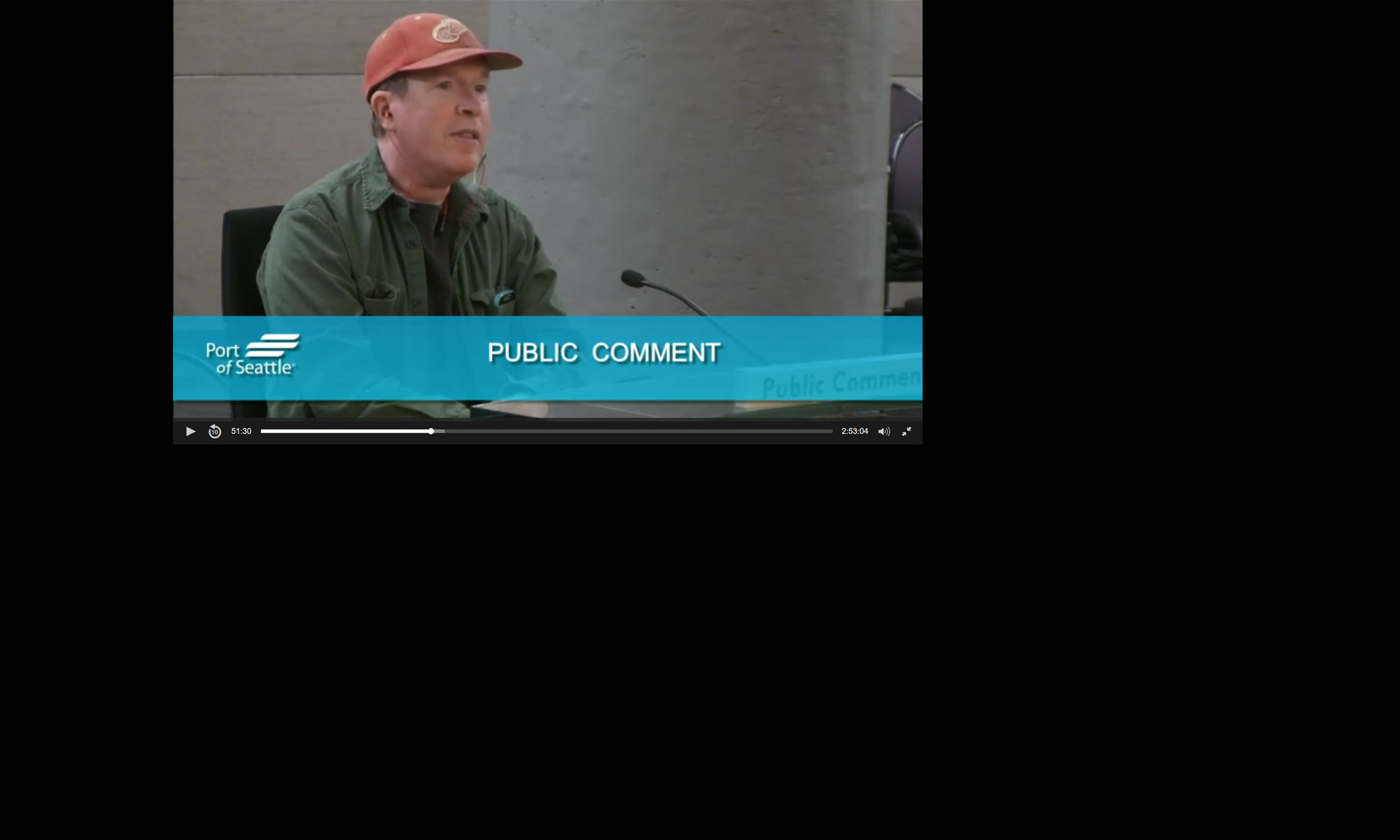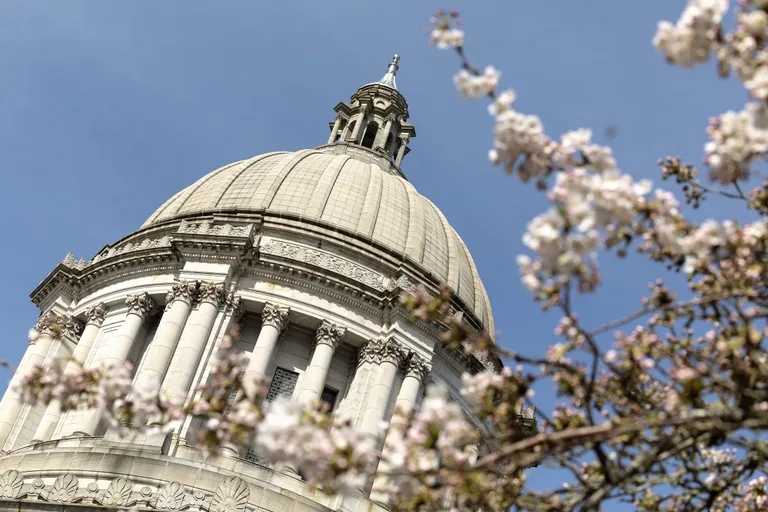Seattle Times staff reporter
OLYMPIA — It’s budget season in Olympia, and Washington lawmakers, now equipped with proposals from both chambers, will spend the next few weeks negotiating what should be included or cut in the budget for the next two years.
A daunting task in normal years, this session adds an extra layer of complexity as lawmakers look to fill a multibillion-dollar budget hole spread over not just the upcoming biennium, but the two years after that, as well.
The House and Senate budget proposals are less than a billion dollars apart, with the House offering a $77.8 billion package and the Senate $78.5 billion, but there are big contrasts in how each chamber proposes to spend and save.
Here are some key differences, with just a month to go before the session ends April 27.
Rainy day fund
Although State Treasurer Mike Pellicciotti warned lawmakers against using money in reserve funds, Senate budget writers are moving forward with a proposal to drain the state’s rainy day reserves in 2026.
In a news conference Tuesday, Senate Majority Leader Jamie Pedersen, D-Seattle, said the most “significant cash crunch” will be in 2026, and that it is necessary to tap into the fund to avoid deep cuts to services. He noted that Gov. Bob Ferguson’s proposal to cut funding for food banks got a lot of attention in the Senate Democratic caucus.
“We don’t want to be in a position to have a billion dollars, or $1.7 billion, sitting in a rainy day fund while people are going hungry because we made cuts that we didn’t have to make,” Pedersen said.
House lawmakers are being much more cautious.
On Tuesday, House Majority Leader Joe Fitzgibbon, D-West Seattle, said that while the rainy day fund, also known as the Budget Stabilization Account, “does exist for times like this,” he was relieved that House budget writers were able to balance their version of the budget without relying on that account. He acknowledged, however, that as both chambers work to reach final agreement, going into the reserves is “very much a possibility.”
Money to hire more police
Despite being one of the most talked about proposals this session, Senate Democrats are not including money in their version of the budget to hire more police officers in Washington.
“We chose to not have it in our budget, knowing full well that it is an outstanding issue that will need to be addressed” before the session ends, said Sen. June Robinson, D-Everett, chair of the Senate Ways and Means Committee.
Robinson said Senate lawmakers will work with the House and the governor’s office to make a decision on police funding in the final budget. Ferguson has stated that he would not sign a budget that doesn’t include $100 million to train and hire more police officers.
Senate Minority Leader John Braun, R-Centralia, said leaving out funding for new officers was a “disappointing start,” especially as Ferguson has said he would not sign a budget without it.
House lawmakers are taking a somewhat different approach, too, as their budget includes $50 million for “criminal justice purposes” and $50 million for the community reinvestment program, “which aims to target upstream investments to reduce inequality and stay and prevent crime,” Fitzgibbon said Monday.
“We have a lot of competing priorities funded in this budget, health care, K-12, education, higher education, child care,” Fitzgibbon added. “We increase resources for local governments to hire law enforcement officers, and we have to balance a lot of competing needs.”
House Bill 2015, to create a grant program to hire more officers and allow local governments to increase sales tax without voter approval by 0.1% to pay for “criminal justice” expenses, passed the House this month.
Furloughs
House and Senate lawmakers also do not agree on the approach to state worker pay raises.
House lawmakers are not proposing any cuts to the raises that were part of a collective bargaining agreement reached last year under then-Gov. Jay Inslee, and are not proposing furloughs, a stark contrast to Ferguson’s proposal requiring state workers to take a mandatory furlough day once a month for two years. The raises are estimated to cost about $1.65 billion over the next two years.
Senate lawmakers, on the other hand, are proposing a delay in raises for state employees until 2027 and 13 days of furloughs spread out over one year, configured as a 5% reduction in salary in 2026.
Republican budget writers in the Senate propose canceling the raises altogether, instead offering state employees $5,000 over two years.
Taxes
House and Senate Democrats are on a similar page when it comes to a proposal to tax wealthy individuals in Washington, but there are slight differences.
The House version would levy a tax of $8 on every $1,000 of assessed value on financial assets such as stocks, bonds, exchange-traded and mutual funds for individuals with more than $50 million of such assets. It only taxes amounts over the $50 million threshold. House Democratic lawmakers say the tax would impact about 4,300 individuals in the state and generate about $2 billion a year, starting in 2027.
Senate Democrats are instead proposing a $10 tax rate for those with more than $50 million in such assets, but instead of only taxing the amount over $50 million, individuals would be taxed on all of it. The plan would generate about $4 billion per year starting in 2027.
There are some differences in their budgets when it comes to the introduction of other taxes, such as a tax on business.
The Senate version of the business tax is similar to Seattle’s JumpStart tax, and would remove the cap on employer payroll taxes for companies with at least $7 million in payroll expenses and would add a 5% tax on payroll expenses above the Social Security threshold.
Under the House version, businesses with taxable income over $250 million a year would see a 1% business and operating tax surcharge.
And there are also differences in proposals to adjust the 1% cap on property taxes. An initiative passed in 2001 limited the amount cities can collect to 1%, with anything above the amount needing approval from voters.
The Senate budget proposal could adjust the current 1% cap on the property tax growth limit to a combined rate of inflation and population growth, for the state’s common schools levy, cities and counties and special purpose districts, if approved by local governments. Localities could opt for lower growth rates under the proposal, which also would fully exempt state property tax for those in the Property Tax Exemption for Senior Citizens and People with Disabilities program.
The proposal in the House allows for an adjustment from the 1% cap to a combined rate of inflation and population growth, not to exceed 3%.
“To be clear, this bill does not change the constitutional cap of 1% on property taxes,” said Rep. April Berg, D-Mill Creek, chair of the House Finance Committee.
Republicans have been staunchly against any new revenue proposals this session.
House Minority Leader Drew Stokesbary, R-Auburn, said Tuesday the revenue increases are taking the state in an “awfully troubling direction.”
“Their budgets would tax the jobs right out of Washington, but it wouldn’t just tax the jobs out of Washington, it would tax the joy out of Washingtonians,” Stokesbary said.
Senate Democrats also introduced proposals that were not included in the House version of the budget, including, for example, a proposal to repeal 20 tax exemptions that are “ineffective and obsolete,” such as tax exemptions for gold bullion and prescription drug wholesalers.
Additionally, Senate Democrats also propose a decrease on sales tax from 6.5% to 6% in 2027, which they estimate will decrease revenue by about $1.3 billion per year. Lawmakers say the decrease is to provide some relief from the “regressive” sales tax for low- and middle-income families.
Shauna Sowersby: 206-652-7619 or ssowersby@seattletimes.com. Seattle Times political reporter.




